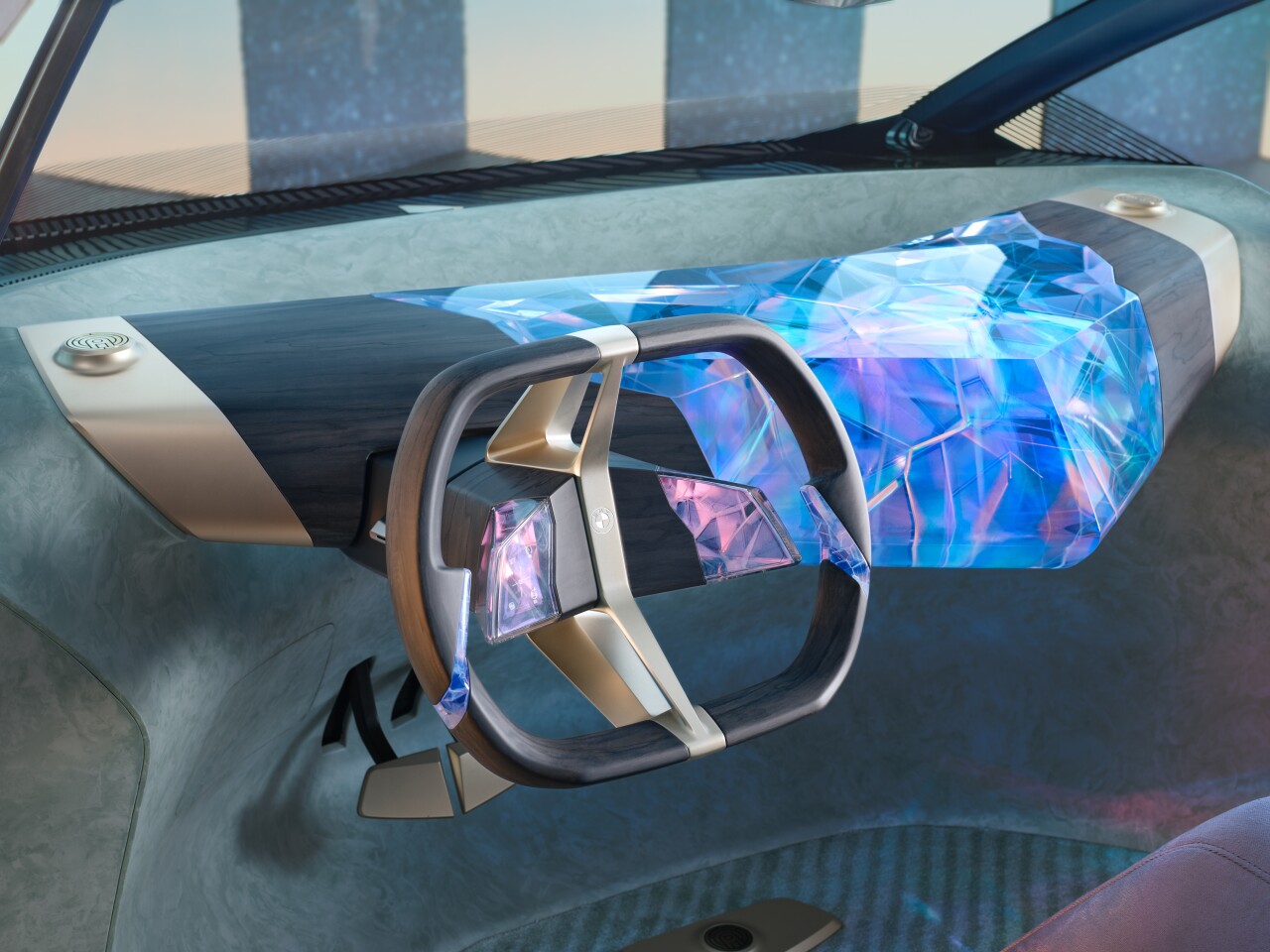Given that the currently available BMW i8 and i3 are already fairly futuristic cars, one might wonder what form a Bimmer made 19 years from now would take. The German automaker is exploring that question, with its BMW i Vision Circular concept.
Presented at last month's IAA Mobility 2021 show in Munich, the fully-electric four-seater BMW i Vision Circular is intended to provide a glimpse of where BMW sees itself being in the year 2040. The design of the car is focused on four of the Rs of sustainable manufacturing – Reduce, Reuse, Recycle and Rethink.
Starting on the outside, it's worth noting that no exterior paint is used on the vehicle. Instead, its main body is constructed of gold-anodized recycled aluminum, while its rear end is made of recycled steel that has been heat-treated to take on a bluish-purple color. This not only eliminates the need for potentially toxic paint, but also leaves the two metals in a reportedly 100-percent recyclable form.
The bumpers are made of recycled, recyclable plastic. No chrome or leather is used anywhere in the car.
The tires, meanwhile, are composed of a translucent "certified, sustainably cultivated natural rubber," to which colored particles of recycled rubber have been added for extra strength. Those tires are mounted on rims that are designed to maximize aerodynamics and brake cooling, while minimizing materials use.

Up top, there's a glass roof with a built-in mechanical shading system, which flows into a dark glass tailgate that incorporates the tail lights, turn indicators and digital displays. A similar setup is used for the lighting in front. Although no information has been provided on the car's motor, it would be powered by an entirely recyclable all-solid-state battery.
Additionally, all of the vehicle's components can be installed or removed using a special BMW-specific socket wrench. This means that individual parts can easily be taken out for recycling plus they can be swapped out for upgrades, allowing the car to stay fully functional and up-to-date instead of ending up in the crusher. There are no bonded connections between parts.
The front and rear side doors open forward and backward respectively, allowing for easy access to the vehicle's cabin.

Some of the cabin's features include velvet-like recycled plastic upholstery; a V-shaped instrument panel with a crystal body and sides made of "responsibly sourced and externally certified" wood; a head-up display that projects driving data onto the bottom of the windshield; a Hans-Zimmer-designed sound system that can deliver different audio to different passengers via headrest-integrated speakers; and a 3D-printed steering wheel made of bio-based materials.
That steering wheel sports a crystal interface that includes displays similar to those on the instrumental panel, which are navigated utilizing thumb pads – so the driver's hands always stay on the wheel.
"The BMW i Vision Circular illustrates our all-encompassing, meticulous way of thinking when it comes to sustainable mobility," says Oliver Zipse, Chairman of the Board of Management of BMW. "It symbolizes our ambition to be a pioneering force in the development of a circular economy."
Source: BMW













![The Ti EDC [everyday carry] Wrench is currently on Kickstarter](https://assets.newatlas.com/dims4/default/0ba225b/2147483647/strip/true/crop/4240x2827+0+3/resize/720x480!/quality/90/?url=http%3A%2F%2Fnewatlas-brightspot.s3.amazonaws.com%2F59%2Fb2%2F6a6fdd0348a8bfdad88bbcefec53%2Fdsc03572.jpeg)